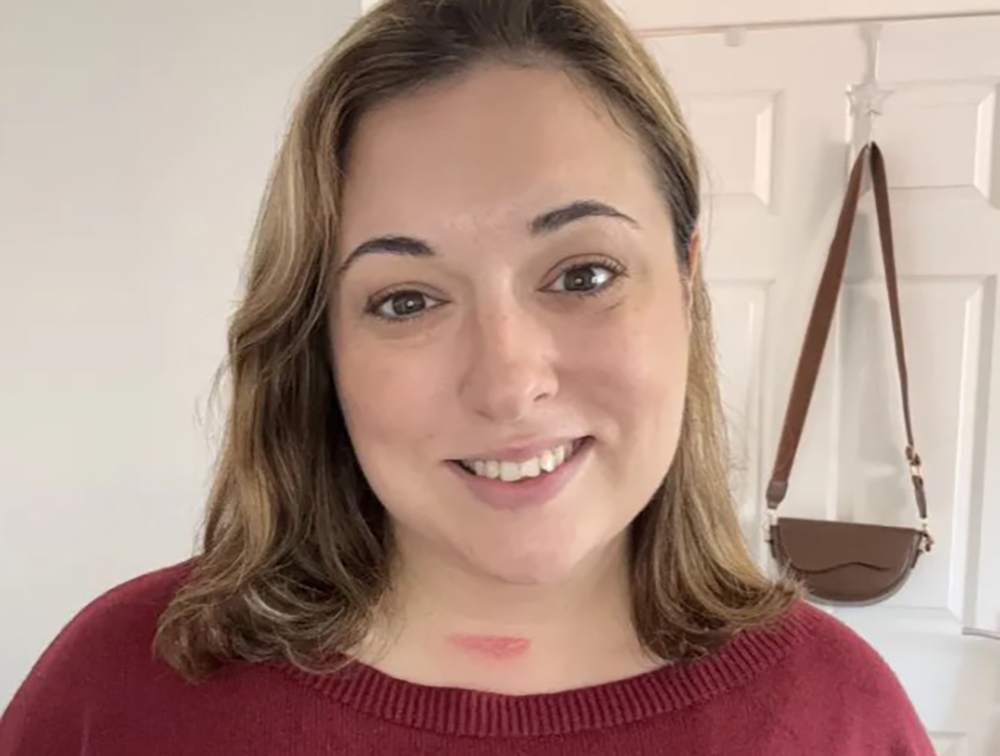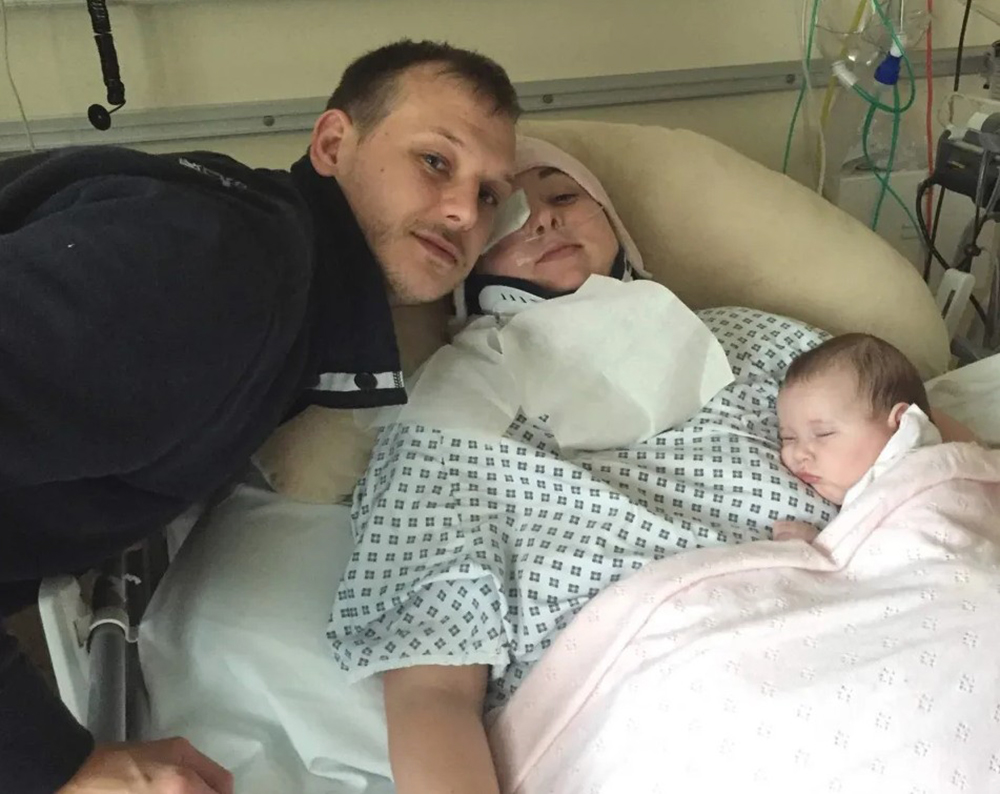In 2016, Hayley, then living in Milton Keynes, Buckinghamshire, woke up to make a bottle for her newborn daughter. Instinctively, when she saw her daughter yawn, Hayley also yawned and stretched. Immediately, she felt a jolt of electricity run down one side of her body, her arm freezing mid-air. "I knew immediately something horrible had happened," she recalled in mid-9/2025.
Hayley's husband, 39-year-old Ian, initially thought she was overreacting. However, at his wife's insistence, he called an ambulance. On the way to the hospital, every bump felt like her spine was being torn apart. At the hospital, despite being given pain medication, she screamed throughout the night. The nurses said the scans showed nothing unusual, but Hayley still believed something was wrong with her body.
 |
Hayley suffered hemiplegia after a yawn. Photo: Kennedy Newsand Media. |
Hayley suffered hemiplegia after a yawn. Photo: Kennedy Newsand Media.
After further testing, doctors discovered that two cervical vertebrae, C6 and C7, had been pushed forward, compressing her spinal cord due to the force of the yawn. This severe injury caused complete paralysis on the right side of her body. The situation was so critical that the surgeon informed her family that she only had a 50% chance of surviving the surgery, let alone walking again.
Medical experts say the cervical vertebrae, especially C6 and C7, play a crucial role in supporting the head and protecting the spinal cord. However, they are also the most flexible vertebrae. When subjected to a sudden and unusual force, the discs and ligaments can be damaged.
When the vertebrae slip forward, they cause acute disc herniation, directly compressing the spinal cord. The spinal cord is the main nerve pathway that transmits signals from the brain to the entire body. Injuries to the cervical vertebrae can cause quadriplegia or, in this case, hemiplegia (paralysis on one side of the body), depending on the location and extent of the compression.
"My last memory is of my mother at my bedside as they put me under. When I woke up, I had undergone emergency surgery," Hayley recounted. "I kept thinking, 'I broke my neck from yawning, how is that even possible?'"
Doctors removed the damaged discs and stabilized Hayley's neck with a metal plate. The surgery was successful, but her and her family's lives were completely changed. Hayley had to learn to walk again after months in a wheelchair. Her husband had to take on the role of both caregiver and sole provider for their child. They even experienced homelessness due to financial difficulties.
Hayley's spinal cord injury is permanent. She has to take medication daily to manage the electric shock-like pain every time she walks. In addition, she also suffers from fibromyalgia, which prevents her from working or playing with her children. Even the act of yawning has become a source of anxiety. "Every time I feel a yawn coming on, I try to suppress it," she shared.
Hayley is grateful to the medical team who helped her avoid being confined to a wheelchair. "Thanks to them, I'm still here, able to walk and be with my children," she said.
 |
Hayley in her hospital bed, with her husband and newborn daughter. Photo: Kennedy Newsand Media. |
Hayley in her hospital bed, with her husband and newborn daughter. Photo: Kennedy Newsand Media.
In humans and some animals, seeing or hearing someone else yawn can trigger a yawn in oneself. Scientists call this contagious yawning, which is related to empathy, the ability to understand and share the feelings of others. Studies show that people with high empathy are more susceptible to contagious yawning. Conversely, this phenomenon is less common in people who have difficulty with social interaction, such as those with autism spectrum disorder.
Binh Minh (The Sun, Mail)












